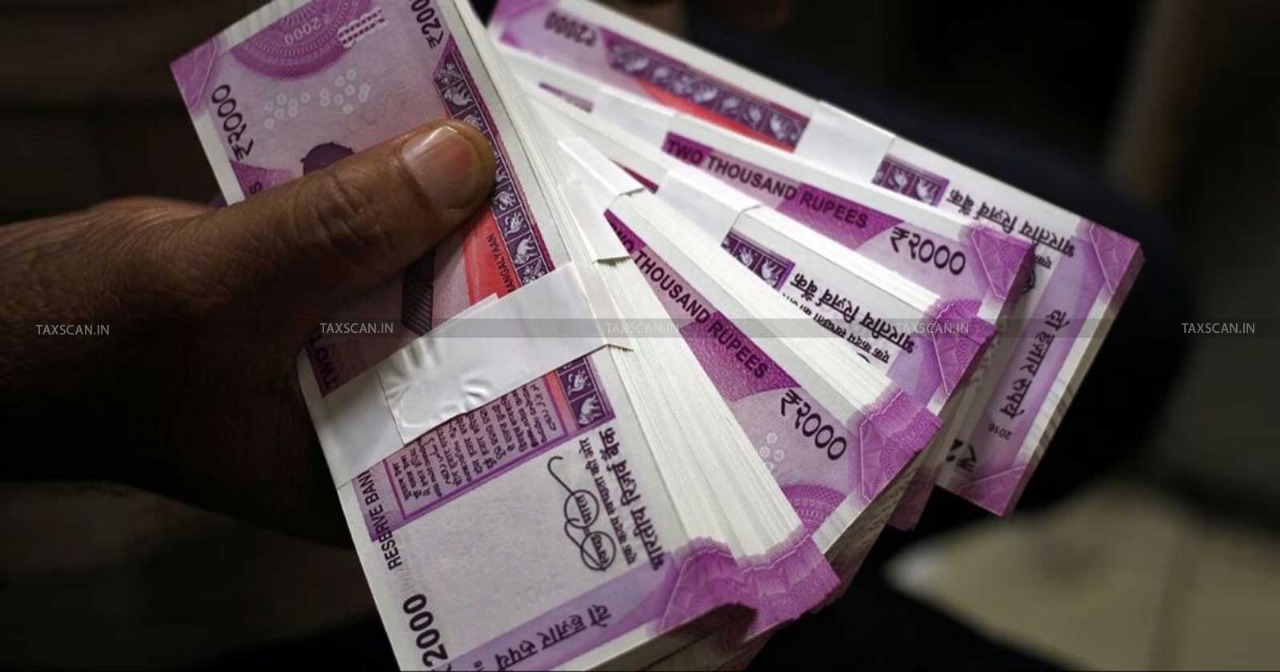RBI Annual Report FY 2024-25: 98.2% of ₹2000 Currency Notes Back with Banks, Currency in Circulation tops ₹36.9 Lakh Cr
The RBI stopped printing ₹2, ₹5 and ₹2,000 notes during the year

RBI – Annual Report – RBI Annual Report – Financial Year 2024-25 – taxscan
RBI – Annual Report – RBI Annual Report – Financial Year 2024-25 – taxscan
The Reserve Bank of India’s latest annual report confirms that the demonetisation-style withdrawal of the high-value ₹2,000 banknote is now practically complete, even as overall cash in the economy continues to expand.
Cash in the economy still rising
- Currency in circulation (CiC) grew 6% during FY 2024-25 to ₹36.87 lakh crore, slightly faster than nominal GDP, though the cash-to-GDP ratio dipped to 11.1%.
- The ₹500 note remains the work-horse, accounting for 86% of CiC by value and 40.9% by volume.
- Lower-denomination notes of ₹10, ₹20 and ₹50 together now make up nearly one-third of all pieces in circulation, reflecting everyday transactional demand.
₹2,000 note: withdrawal draws to a close
- As of 31 March 2025, 98.2% of the ₹3.56 lakh crore worth of ₹2,000 notes originally in circulation has been returned. Only about ₹6,366 crore in the violet bills remain outside banks.
- The RBI stopped printing ₹2, ₹5 and ₹2,000 notes during the year. Members of the public can still deposit or exchange the remaining ₹2,000 notes at any of the RBI’s 19 issue offices, or send them via India Post for credit to their bank accounts.
Digital rupee gathers momentum
The pilot retail e-₹ in circulation jumped more than four-fold to ₹1,016 crore during the year, with token volumes rising across every denomination from ₹0.5 to ₹500. The wholesale pilot remained tiny, but the sharp retail growth signals early traction in the central bank digital currency project. (Source: RBI Annual Report 2024-25)
The UAE Tax Law Is Evolving — Stay Ahead Before Clients Find Someone Who Already Is, Click Here
Note printing gets costlier as clean-note drive intensifies
- Security-printing expenditure surged 25% to ₹6,372.8 crore on the back of a bigger indent for fresh notes and higher raw-material costs. The Economic Times
- A record 3.03 billion banknotes were printed, led by a larger order for ₹500 and ₹100 pieces.
Modernising cash logistics: Project Sa-Mudra
The RBI launched Project “Sa-Mudra” to redesign the entire currency supply chain using network optimisation, automation and business-process re-engineering. A multi-agency task-force will roll out the upgrade in phases, aiming for faster distribution and lower carbon footprint.
Greener disposal of soiled notes
Field trials showed that shredded banknote briquettes can replace wood particles in manufacturing particle boards. The central bank is empanelling board makers to lift roughly 15,000 tonnes of briquettes produced each year, reducing landfill and incineration.
Tougher standards to keep counterfeits at bay
Beginning 1 November 2025, banks may use only note-sorting machines certified to BIS Standard IS 18663:2024, ensuring nationwide uniformity in authenticity checks. Counterfeit detection fell marginally to 217,396 pieces in FY 2025; fakes in ₹500 and ₹200 denominations, however, rose 37% and 14%, respectively.
Outlook for FY 2025-26
The Currency Management Department will focus on:
- Rolling out Sa-Mudra infrastructure upgrades.
- Introducing upgraded security features on banknotes.
- Expanding soiled-note processing capacity and installing new single-bundle shredders.
- Surveying public payment behaviour to gauge cash versus digital preferences.
In short, Cash is still king in India, but its composition is changing fast. The near-total return of the ₹2,000 note, surging e-Rupee pilots and a once-in-a-generation overhaul of the currency supply chain mark a pivotal year in the RBI’s stewardship of paper (and digital) money.
Support our journalism by subscribing to Taxscan premium. Follow us on Telegram for quick updates


